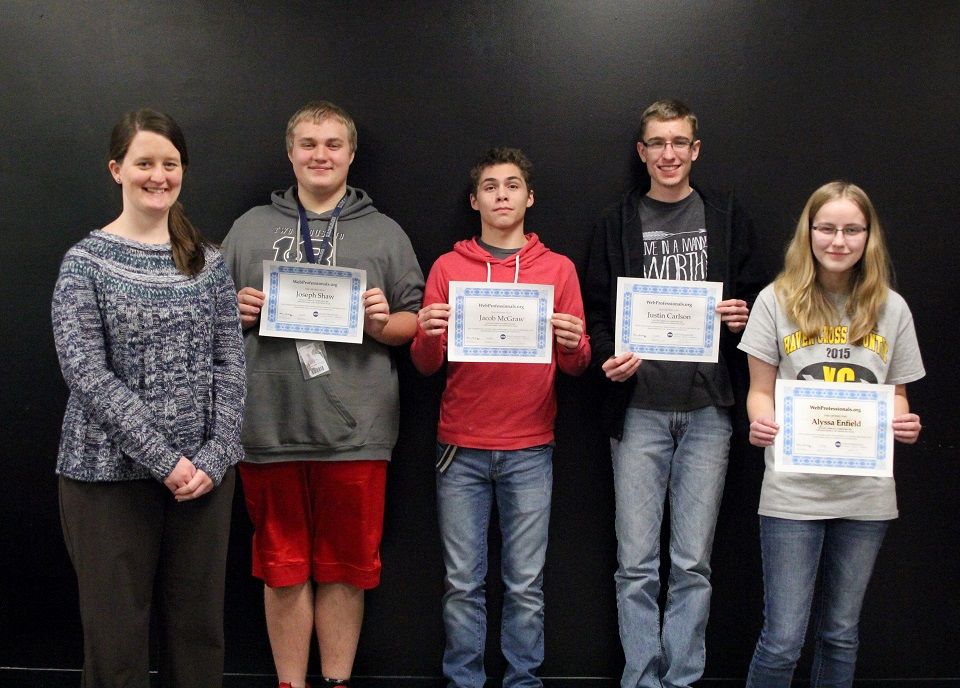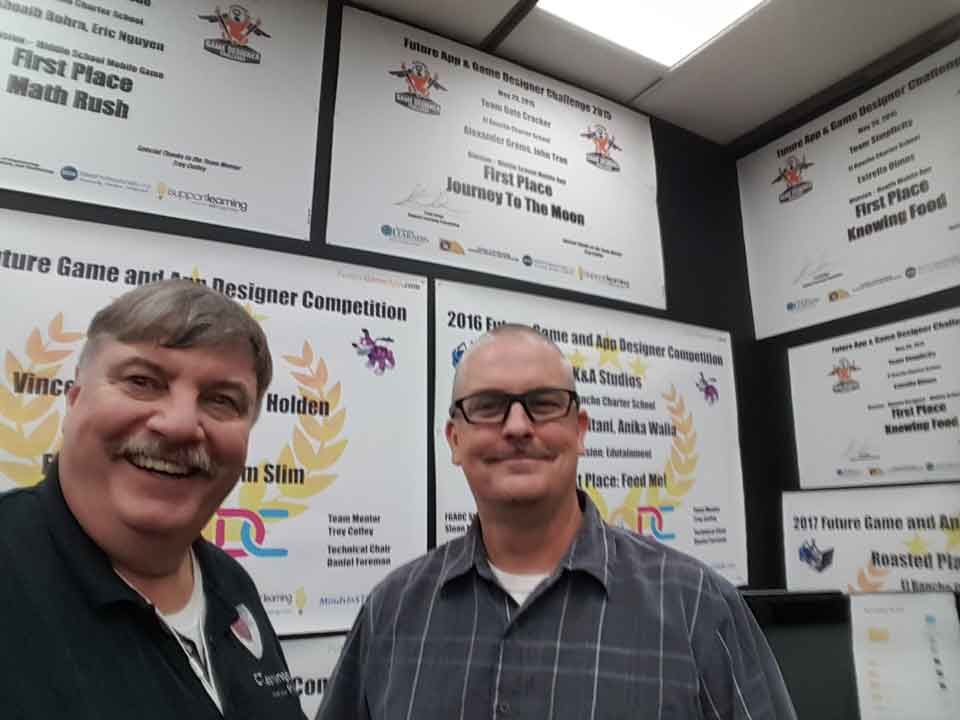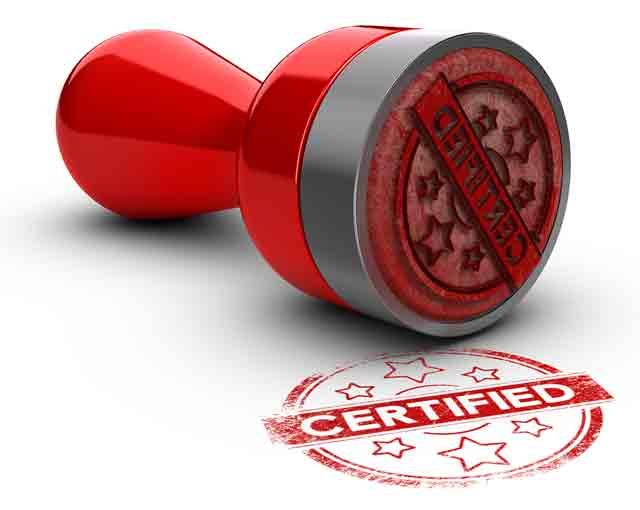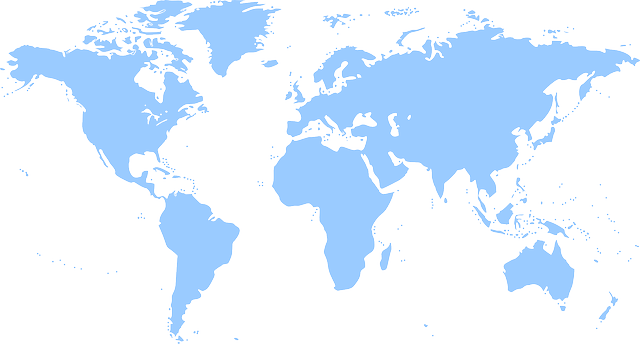Blog
El Rancho Charter School – First in the Nation – Middle School Students earn Web Design Industry Certificates from Professional Association
May 31, 2018, in Anaheim, California – El Rancho Charter School is celebrating four of its students, the first middle school students in the U.S. to receive the Certified Web Designer Novice International Industry Certificate from the Web Professionals Association. Middle School Certificates are also available for Web Development and Design , Web Technologies with Apps, Sites, Games and VR , Web and Mobile App Development
New Professional Industry Certificate to engage STEM Middle School Learners
This is the first year for this new credential aimed at helping middle school students understand that hard work – even as early as in middle school – can open doors and create career opportunities. This course was developed to work on Chromebooks, PC and Mac with a Zero Footprint on the device. The course is complimented with a free suite of web-based development tools.
Highly creative career with high growth potential.
Troy Coffey talked about the impact of the new certificate on students: “At ERCS we have been looking around for opportunities to give our students a unique leg up in high demand STEM careers. I found out about this opportunity to be the first school to work with this new international certificate program and my administration, and I jumped at the chance.”
“Last year, during Back To School Night, I was able to present to the parents of my 7th grade students, an opportunity that seemed unreal at the time. Even I had to ask myself “WHY?”. Why would an organization offer industry certifications to a group of 12 and 13 year olds? However, I was able to tell our parents that their kids, our students, would have just that… an opportunity to sit for an exam that would give them an entry level international certification in Web Development . The parents gasped and awed, and like me, couldn’t believe it. But, I explained my theory; that these students, these 12 and 13 year old students, are beginning their educational pathway. They are starting to develop professional interests and goals for their future. What better way to show them that CS is an obtainable goal … that it is in, in fact, a realistic pathway for them… than to allow them, early on, to sit for and succeed in passing, an exam that will give them an industry certification? Small successes are huge in early education. Like any goal, small steps, like climbing a ladder, must be achieved in order to reach the ultimate goal. The excitement from the parents, and our school administration, was electric. And, I, as the teacher, am thankful for all who made it possible. It brought an excitement to our classroom, and a renewed sense of what IS possible in the minds of our young students .”
He continued: “This is the first year I have taught this web development curriculum. I should stop here and confess; my background is not coding or web development. I am not a web designer or coder by training. Teaching this course was new to both my students and me. This curriculum is easy for me to use, meets standards, and is perfectly aligned with the new industry certificate. This is also the first time I have been able to offer an industry credential to my students. Needless to say, my admin, students and their parents were all on board. ”
This middle school level curriculum is delivered online, and students can use PC, Mac, or Chromebooks to learn and chart their path through the course. Media-rich tutorials with interactive video and an embedded coding sandbox allow students to immediately play with the code they are learning. All assessments are built in, and solutions for all project work is provided.
STEM Education Teacher Troy Coffey of El Rancho Charter School (on right) with CTeLearning.com’s Lead Developer Steve Waddell (on left).
Steve Waddell, founder of CTeLearning.com , discussed the importance of such programs with the option for industry certifications: “ Why wait for a student to enter high school for their first chance at earning industry recognition? We want to find new ways to get students enthused about high demand careers. Research shows high school students who are engaged in career and technical education courses are more likely to graduate than those who are not. Why not let students see that they can be recognized for career pathway work earlier in their academic careers? Give them the chance to see that industry professionals are interested in their middle school achievements. ”
STEM Professionals Welcome Middle School Certificate Earners
“All of us at the Web Professionals Association are very proud of Troy and the El Rancho Charter School’s students. They proved that middle school students do see the value of learning and investing in career paths early . As a professional association, we love seeing students take these first important steps towards high demand STEM and STEAM careers,” said Mark DuBois, executive director of the Web Professionals Association. “ The fact that we see buy-in from students, parents, teachers, and principals tells us that we are on the right path to offer this opportunity. This is just the beginning – and what a fantastic beginning it is. Mr. Coffey and his students were great to work with, and we look forward to seeing more ERCS students receive their certificates next year. Congratulations to everybody, and we can’t wait to see these students work with us again in the future as professionals.”
Dr. Mauricio Castillo, professor of Industrial Technology, STEM/Technology Education, and Engineering Education at California State University, Los Angeles, praised the program: “My current work with middle school and high school programs shows that engaging students earlier is better when it comes to encouraging students to think strategically about their high school careers and college careers. Sometimes students don’t see how important school is to their future. Unfortunately, some students begin to lose confidence in their abilities as they move through middle school. As educators, we want to make sure all students believe in themselves and the value of the work they do today. High fives and praise from teachers, parents, and administrators are great, but so is documented proof that an association of industry professionals also believes in you. For some students, that is the extra nudge they may need to see the value in staying and trying to do their best in school, both now and in the future. ”
How did the students earn their STEM Industry Certificate?
Don’t overlook the importance of gaining your first industry credentials.
Mr. Coffey’s students earned industry certificates by completing the Web Development and Design Industry Certification curriculum (Middle School Version – www.ctelearning.com) and then sitting for a proctored online exam at ERCS. WebProfessionals.org is the international industry association for IT professionals engaged in web development, connected applications, and mobile app development, and has been serving Web Development and IT professionals for over 25 years. WebProfessionals.org is proud of their professional outreach work and supports SkillsUSA, WorldSkills International, and numerous competitions and events that help learners reach their professional career goals.
“Again, Congratulations to everyone. I do want to give a special thank you to ERCS Principal Michele Walker for all her support for Mr. Coffey with this first of a kind STEM Industry Certificate course. And special thanks to Mark DuBois and the Web Professionals Association for all their work behind the scenes to support CTE in our country.”
-Steve Waddell, Founder and Lead Developer, CTeLearning.com
Share To
Get in touch with us today!
You can book a demo directly using Calendly, call us directly at 913-764-4272 or 877-828-1216, or submit the form and we will reach out to you.
We look forward to helping you and your students.

Most Recent Posts







